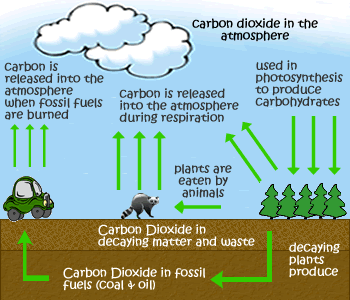The movement of carbon between the atmosphere and the land and oceans is dominated by natural processes, such as plant photosynthesis. While these natural processes can absorb some of the net 6.2 billion metric tons of anthropogenic carbon dioxide emissions produced each year, an estimated 4.1 billion metric tons are added to the atmosphere annually. This positive imbalance between greenhouse gas emissions and absorption results in the continuing increase in atmospheric concentrations of greenhouse gases.
Plants are green machines that act as natural filters of our air. Through the process of photosynthesis they absorb carbon dioxide from the atmosphere and store it in their trunk, branches, leaves, roots, soil and foliage, while releasing oxygen back out.
Planting of trees is thus a good way of increasing carbon sequestration (removal of carbon from the atmosphere).

The Carbon Cycle (graphic from http://www.kidsgeo.com/images/carbon-cycle.gif)